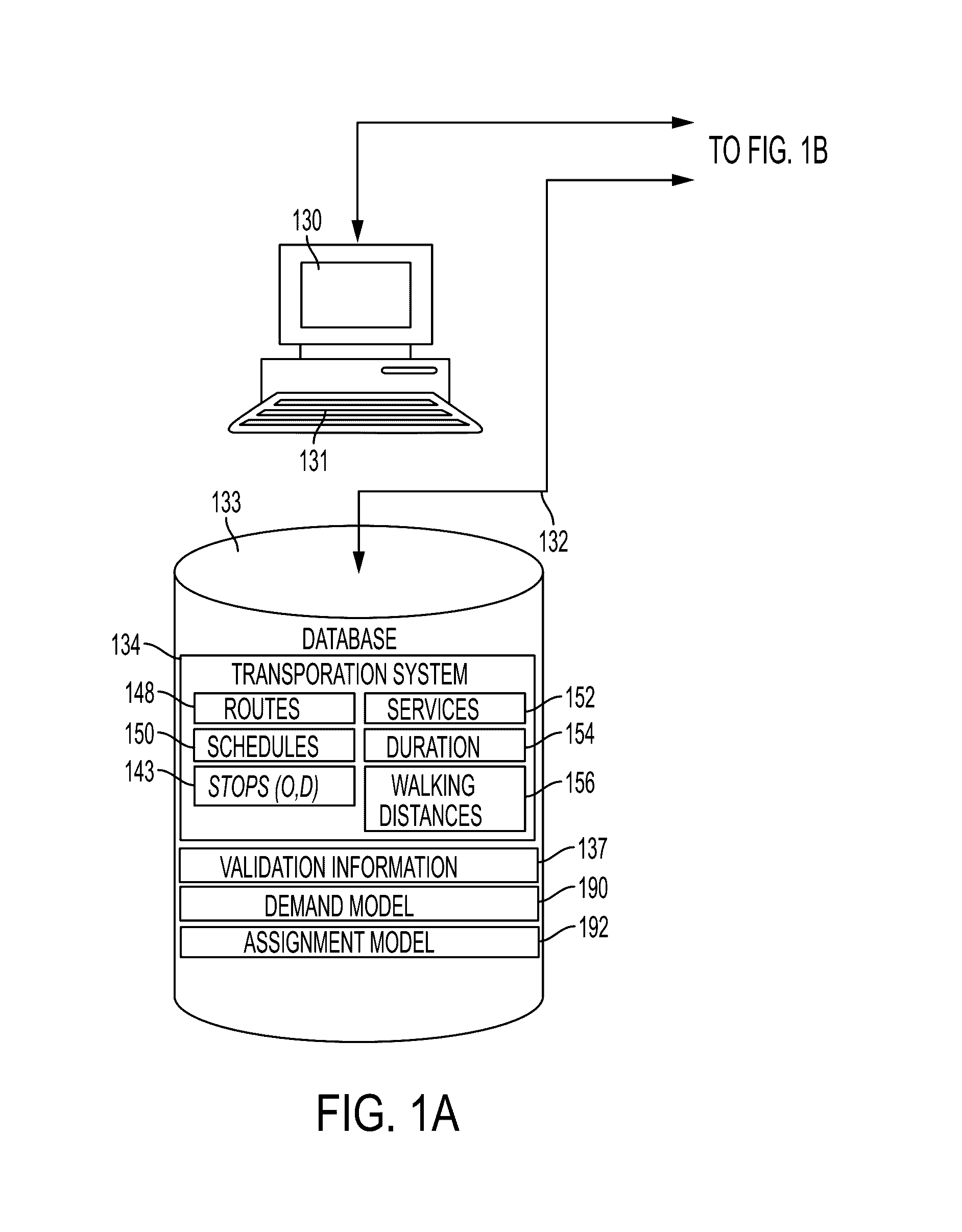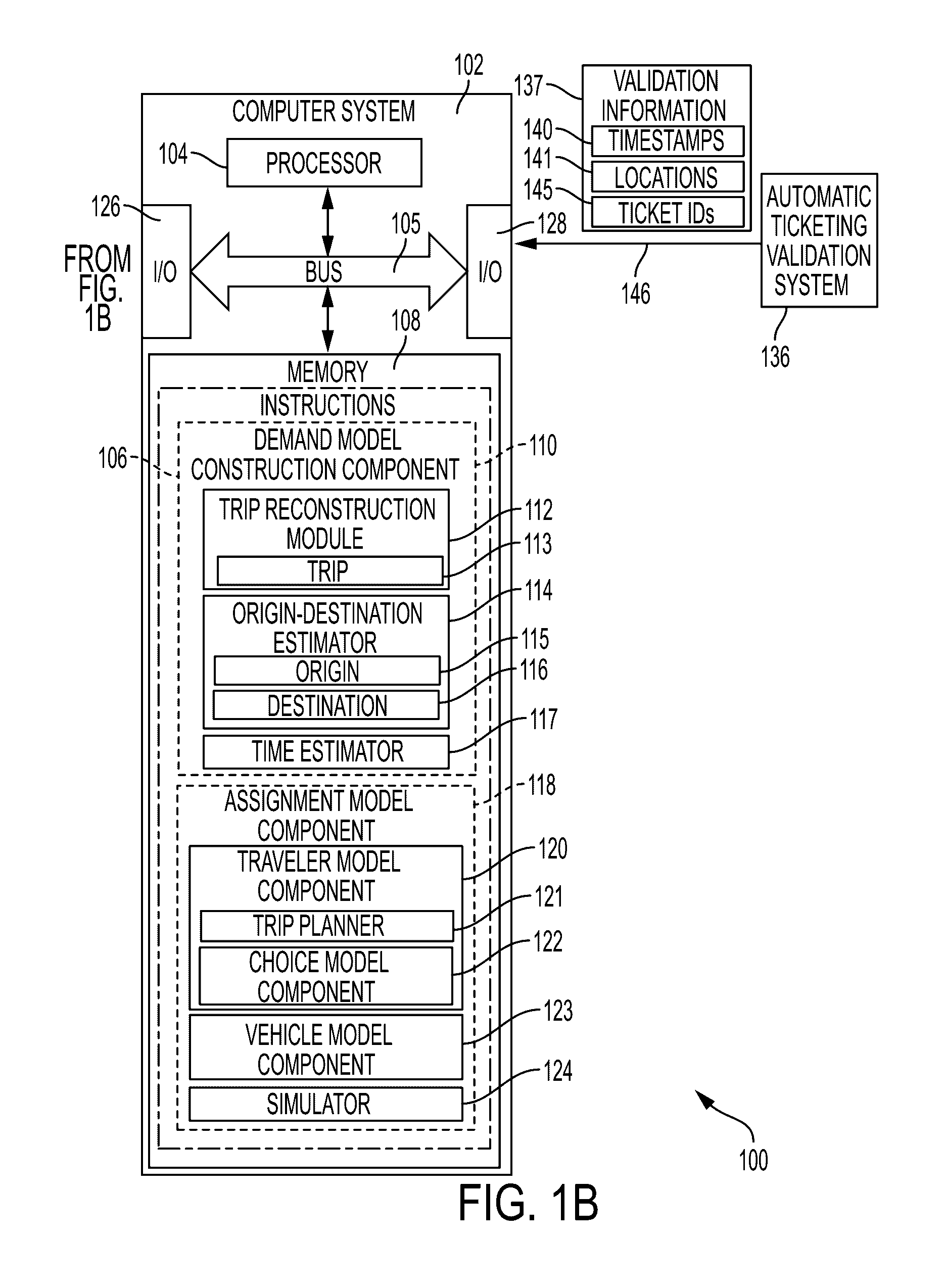Learning mobility user choice and demand models from public transport fare collection data
a technology for public transportation and demand models, applied in knowledge representation, instruments, computing models, etc., can solve the problems of increasing the challenge, and increasing the challenge of urban transportation,
- Summary
- Abstract
- Description
- Claims
- Application Information
AI Technical Summary
Benefits of technology
Problems solved by technology
Method used
Image
Examples
Embodiment Construction
[0022]One or more embodiments will now be described with reference to the attached drawings, wherein like reference numerals are used to refer to like elements throughout. Aspects of exemplary embodiments related to systems and methods for re-ranking trips on an associated transportation network are described herein.
[0023]The systems and methods set forth herein utilize fare collection data, i.e., validation information 137, in order to build both the demand model and to learn optimal user choice and demand model parameters. Automatic fare collection data systems provide the full list of validations made by passengers through their use of the transportation systems. In most of the transportation systems people will validate when they enter a vehicle (check-in). Few systems will also ask to validate when they leave the vehicle (check-in / checkout). In many systems regular users will use a transportation medium such as a smart card that will provide a unique identifier of the user for ...
PUM
 Login to View More
Login to View More Abstract
Description
Claims
Application Information
 Login to View More
Login to View More - R&D
- Intellectual Property
- Life Sciences
- Materials
- Tech Scout
- Unparalleled Data Quality
- Higher Quality Content
- 60% Fewer Hallucinations
Browse by: Latest US Patents, China's latest patents, Technical Efficacy Thesaurus, Application Domain, Technology Topic, Popular Technical Reports.
© 2025 PatSnap. All rights reserved.Legal|Privacy policy|Modern Slavery Act Transparency Statement|Sitemap|About US| Contact US: help@patsnap.com



